For the eons that have passed and will pass, humanity is and will be nothing but a speck in the eyes of time, and will be regarded as such in history. For in the end, all that will remain is the empty void we once called Time And Space. | I do not own any of the content here posted, unless otherwise stated. All images and information are obtained from NASA's official website. |
Don't wanna be here? Send us removal request.
Text
Same spot, newer technology. It’s just incredible!
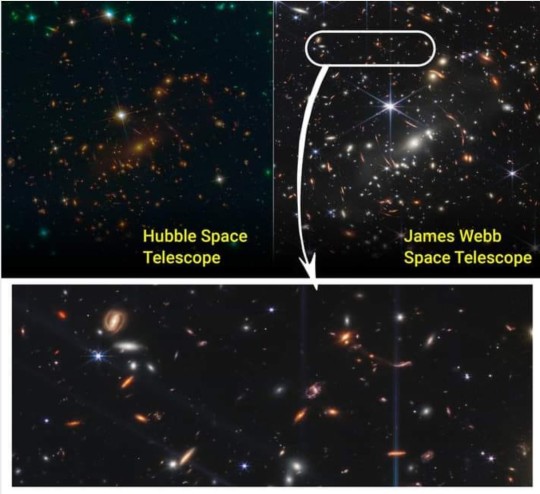
144 notes
·
View notes
Text
NASA’s Webb Delivers Deepest Infrared Image of Universe Yet
NASA’s James Webb Space Telescope has produced the deepest and sharpest infrared image of the distant universe to date. Known as Webb’s First Deep Field, this image of galaxy cluster SMACS 0723 is overflowing with detail.
Thousands of galaxies – including the faintest objects ever observed in the infrared – have appeared in Webb’s view for the first time. This slice of the vast universe covers a patch of sky approximately the size of a grain of sand held at arm’s length by someone on the ground.
This deep field, taken by Webb’s Near-Infrared Camera (NIRCam), is a composite made from images at different wavelengths, totaling 12.5 hours – achieving depths at infrared wavelengths beyond the Hubble Space Telescope’s deepest fields, which took weeks.
The image shows the galaxy cluster SMACS 0723 as it appeared 4.6 billion years ago. The combined mass of this galaxy cluster acts as a gravitational lens, magnifying much more distant galaxies behind it. Webb’s NIRCam has brought those distant galaxies into sharp focus – they have tiny, faint structures that have never been seen before, including star clusters and diffuse features. Researchers will soon begin to learn more about the galaxies’ masses, ages, histories, and compositions, as Webb seeks the earliest galaxies in the universe.
This image is among the telescope’s first-full color images. The full suite will be released Tuesday, July 12, beginning at 10:30 a.m. EDT, during a live NASA TV broadcast. Learn more about how to watch.
Image and text credit: NASA, ESA, CSA, and STScI
James Webb Space Telescope

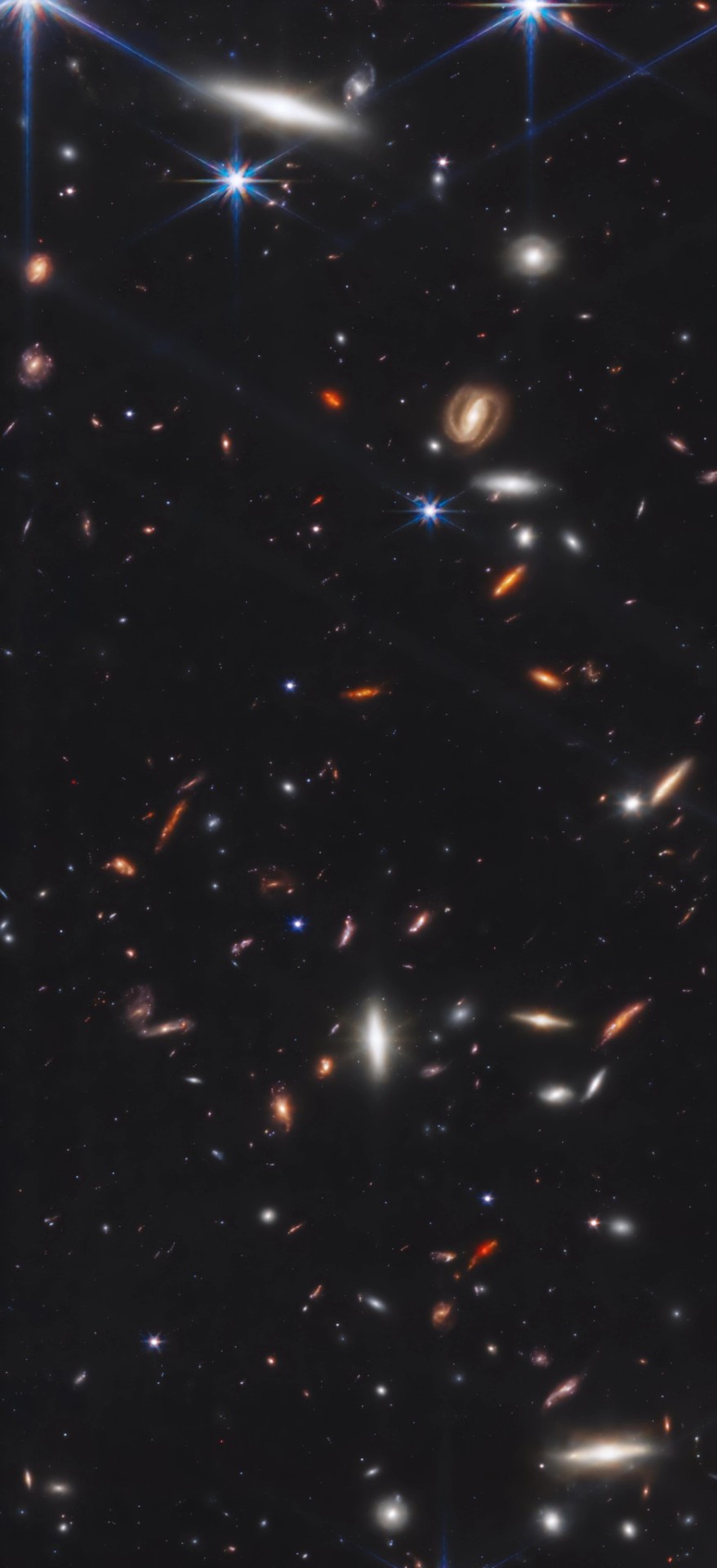
43 notes
·
View notes
Photo
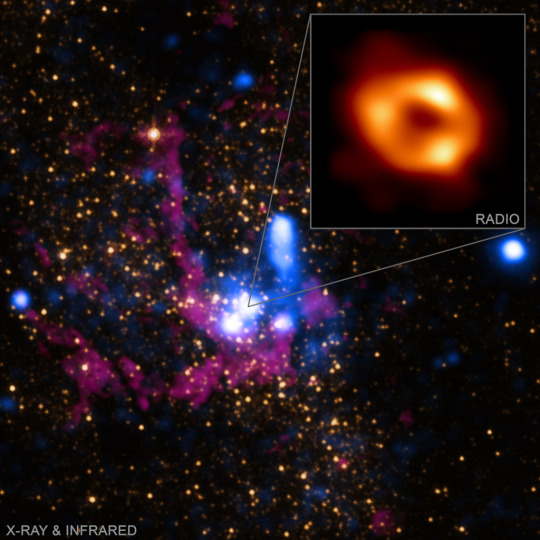
2022 May 13
The Milky Way’s Black Hole Image Credit: X-ray - NASA/CXC/SAO, IR - NASA/HST/STScI; Inset: Radio - Event Horizon Telescope Collaboration
Explanation: There’s a black hole at the center of the Milky Way. Stars are observed to orbit a very massive and compact object there known as Sgr A* (say “sadge-ay-star”). But this just released radio image (inset) from planet Earth’s Event Horizon Telescope is the first direct evidence of the Milky Way’s central black hole. As predicted by Einstein’s Theory of General Relativity, the four million solar mass black hole’s strong gravity is bending light and creating a shadow-like dark central region surrounded by a bright ring-like structure. Supporting observations made by space-based telescopes and ground-based observatories provide a wider view of the galactic center’s dynamic environment and an important context for the Event Horizon Telescope’s black hole image. The main panel image shows the X-ray data from Chandra and infrared data from Hubble. While the main panel is about 7-light years across, the Event Horizon Telescope inset image itself spans a mere 10 light-minutes at the center of our galaxy, some 27,000 light-years away.
∞ Source: apod.nasa.gov/apod/ap220513.html
140 notes
·
View notes
Text

Hubble Hooks a Supernova Host Galaxy
This image from the NASA/ESA Hubble Space Telescope features the spectacular galaxy NGC 2442, nicknamed the Meathook galaxy owing to its extremely asymmetrical and irregular shape.
This galaxy was host to a supernova explosion spotted in March 2015, known as SN 2015F, that was created by a white dwarf star. The white dwarf was part of a binary star system and siphoned mass from its companion, eventually becoming too greedy and taking on more than it could handle. This unbalanced the star and triggered runaway nuclear fusion that eventually led to an intensely violent supernova explosion. The supernova shone brightly for quite some time and was easily visible from Earth through even a small telescope until months later.
Download in full resolution from ESA's Hubble site
Text credit: ESA (European Space Agency)
Image credit: ESA/Hubble & NASA, S. Smartt et al.
Hubble Space Telescope
59 notes
·
View notes
Text
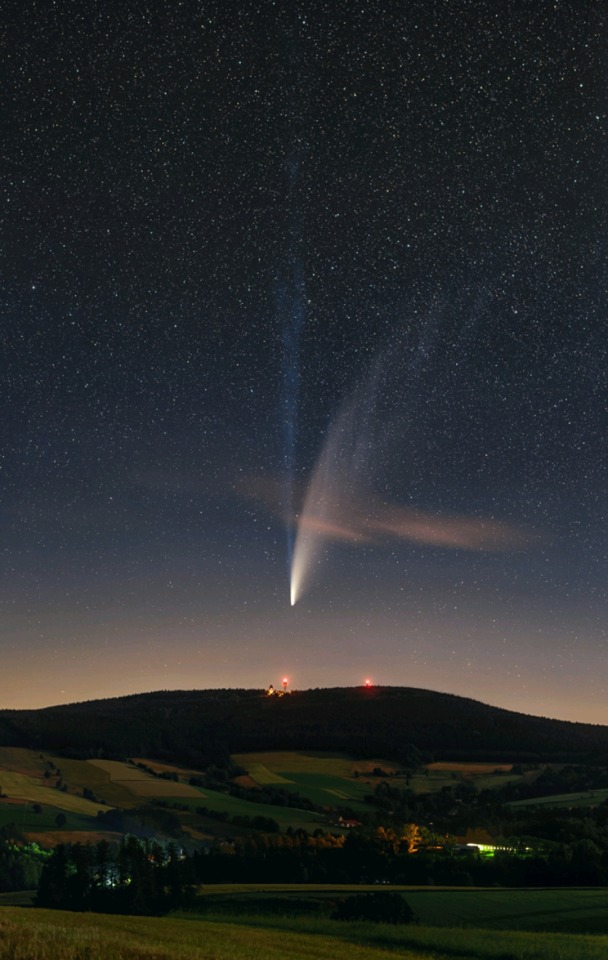
The Long Tails of Comet NEOWISE
This Comet NEOWISE (C/2020 F3) now sweeps through our fair planet's northern skies. Its long tails stretch across this deep skyview from Suchy Vrch, Czech Republic. Recorded on the night of July 13/14, the composite of untracked foreground and tracked and filtered sky exposures teases out details in the comet's tail not visible to the unaided eye. Faint structures extend to the top of the frame, over 20 degrees from the comet's bright coma. Pushed out by the pressure of sunlight itself, the broad curve of the comet's yellowish dust tail is easy to see by eye. But the fainter, more bluish tail is separate from the reflective comet dust. The fainter tail is an ion tail, formed as ions from the cometary coma are dragged outward by magnetic fields in the solar wind and fluoresce in the sunlight. Outbound NEOWISE is climbing higher in northern evening skies, coming closest to Earth on July 23rd.
Image Credit & Copyright: Petr Horalek
Time And Space
460 notes
·
View notes
Text
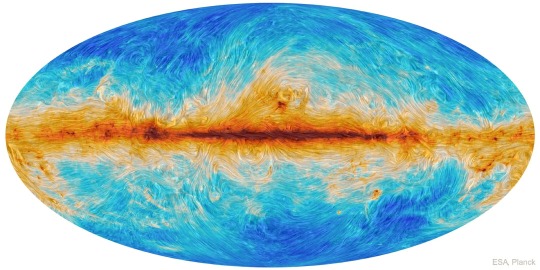
Magnetic Streamlines of the Milky Way
What role do magnetic fields play in interstellar physics? Analyses of observations by ESA's Planck satellite of emission by small magnetically-aligned dust grains reveal previously unknown magnetic field structures in our Milky Way Galaxy -- as shown by the curvy lines in the featured full-sky image. The dark red shows the plane of the Milky Way, where the concentration of dust is the highest. The huge arches above the plane are likely remnants of past explosive events from our Galaxy's core, conceptually similar to magnetic loop-like structures seen in our Sun's atmosphere. The curvy streamlines align with interstellar filaments of neutral hydrogen gas and provide tantalizing evidence that magnetic fields may supplement gravity in not only in shaping the interstellar medium, but in forming stars. How magnetism affected our Galaxy's evolution will likely remain a topic of research for years to come.
Image Copyright: Image Credit: ESA, Planck; Text: Joan Schmelz (USRA)
Time And Space
120 notes
·
View notes
Text

The Lively Center of the Lagoon Nebula
The center of the Lagoon Nebula is a whirlwind of spectacular star formation. Visible near the image center, at least two long funnel-shaped clouds, each roughly half a light-year long, have been formed by extreme stellar winds and intense energetic starlight. A tremendously bright nearby star, Hershel 36, lights the area. Vast walls of dust hide and redden other hot young stars. As energy from these stars pours into the cool dust and gas, large temperature differences in adjoining regions can be created generating shearing winds which may cause the funnels. This picture, spanning about 15 light years, features two colors detected by the orbiting Hubble Space Telescope. The Lagoon Nebula, also known as >M8, lies about 5000 light years distant toward the constellation of the Archer Sagittarius.
Image Credit: NASA, ESA, Hubble; Processing & Copyright: Diego Gravinese
Time And Space
266 notes
·
View notes
Text

Demo-2 Launching Into History
On Saturday, May 30, 2020, a SpaceX Falcon 9 rocket carrying the company's Crew Dragon spacecraft launched on NASA's SpaceX Demo-2 mission to the International Space Station and made its way into the history books. The Demo-2 mission is the first launch with astronauts of the SpaceX Crew Dragon spacecraft and Falcon 9 rocket to the International Space Station as part of the agency's Commercial Crew Program. The test flight serves as an end-to-end demonstration of SpaceX's crew transportation system. Behnken and Hurley launched at 3:22 p.m. EDT on Saturday, May 30, from Launch Complex 39A at the Kennedy Space Center. A new era of human spaceflight is set to begin as American astronauts once again launch on an American rocket from American soil to low-Earth orbit for the first time since the conclusion of the Space Shuttle Program in 2011.
Image Credit: NASA/Joel Kowsky
Time And Space
40 notes
·
View notes
Photo



Welcome to the ISS, Bob and Doug!! Congrats to the whole team!
2K notes
·
View notes
Text
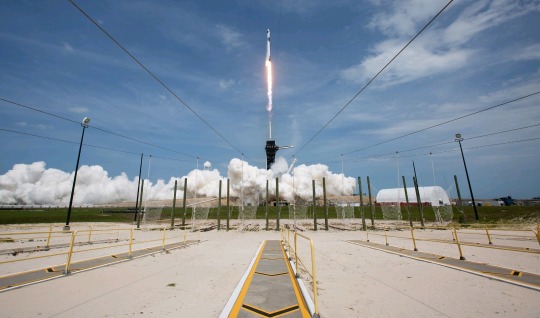
Demo-2 Launch Setting Forth on a Historic Journey
A SpaceX Falcon 9 rocket carrying the company's Crew Dragon spacecraft launched from Launch Complex 39A on NASA's SpaceX Demo-2 mission to the International Space Station with NASA astronauts Robert Behnken and Douglas Hurley onboard, at 3:22 p.m. EDT on Saturday, May 30, 2020, at NASA's Kennedy Space Center in Florida. The Demo-2 mission is the first launch with astronauts of the SpaceX Crew Dragon spacecraft and Falcon 9 rocket to the station as part of the agency's Commercial Crew Program. The test flight serves as an end-to-end demonstration of SpaceX's crew transportation system. A new era of human spaceflight is set to begin as American astronauts once again launch on an American rocket from American soil to low-Earth orbit for the first time since the conclusion of the Space Shuttle Program in 2011.
Image Credit: NASA/Bill Ingalls
Time And Space
63 notes
·
View notes
Video
youtube
NASA has a new ride to the International Space Station for its astronauts and it’s SpaceX’s Crew Dragon Capsule. So I wanted to give you a super quick rundown of the exact timing of the events a crew heading to the ISS will go through on launch day. All the way from suit up to docking to the station.
101 notes
·
View notes
Text
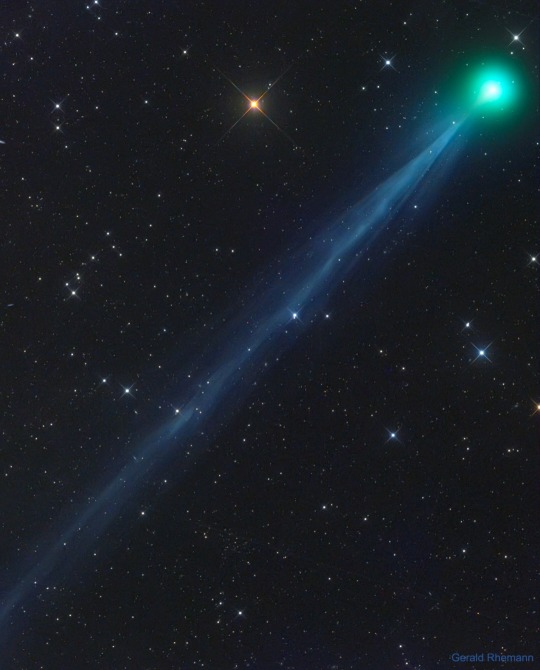
The Ion Tail of New Comet SWAN
Newly discovered Comet SWAN has already developed an impressive tail. The comet came in from the outer Solar System and has just passed inside the orbit of the Earth. Officially designated C/2020 F8 (SWAN), this outgassing interplanetary iceberg will pass its closest to the Earth on May 13, and closest to the Sun on May 27. The comet was first noticed in late March by an astronomy enthusiast looking through images taken by NASA's Sun-orbiting SOHO spacecraft, and is named for this spacecraft's Solar Wind Anisotropies (SWAN) camera. The featured image, taken from the dark skies in Namibia in mid-April, captured Comet SWAN's green-glowing coma and unexpectedly long, detailed, and blue ion-tail. Although the brightness of comets are notoriously hard to predict, some models have Comet SWAN becoming bright enough to see with the unaided eye during June.
Image Credit & Copyright: Gerald Rhemann
SOHO
Time And Space
262 notes
·
View notes
Text
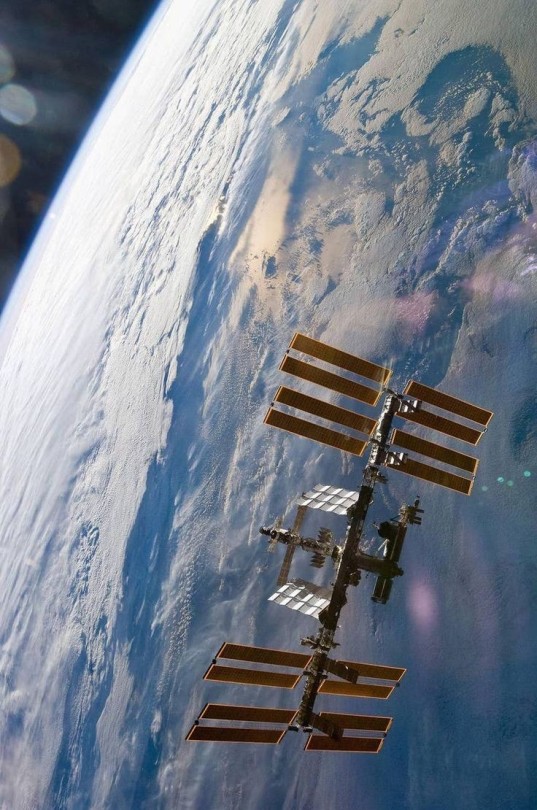

Earth Day 2020
Stay safe!
Time And Space

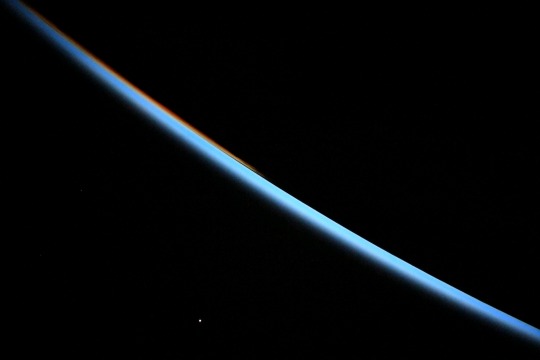
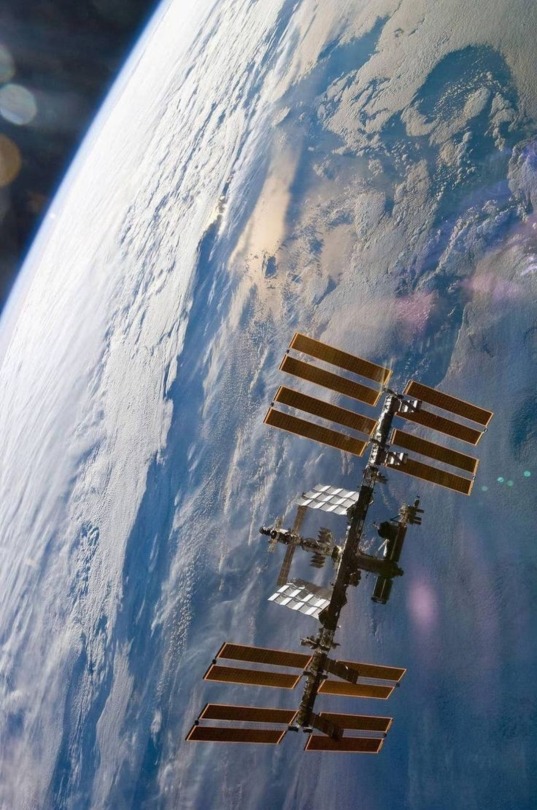
190 notes
·
View notes
Text

Eagle Nebula’s Pillars of Creation in Infrared
Human eyes can see only a small portion of the range of radiation given off by the objects around us. We call this wide array of radiation the electromagnetic spectrum, and the part we can see visible light.
In this Hubble Space Telescope image, researchers revisited one of Hubble's most iconic and popular images: the Eagle Nebula's Pillars of Creation.
Here, the pillars are seen in infrared light, which pierces through obscuring dust and gas and unveil a more unfamiliar - but just as amazing - view of the pillars. The better-known image is of the pillars in visible light.
In this ethereal view the entire frame is peppered with bright stars and baby stars are revealed being formed within the pillars themselves. The ghostly outlines of the pillars seem much more delicate, and are silhouetted against an eerie blue haze.
Explore how light affects the images we see. Find more online activities on Hubble Inspires.
Image Credit: NASA, ESA/Hubble and the Hubble Heritage Team
Hubble Space Telescope
Time And Space
#pilarsofcreation#carina nebula#astronomy#Space#Nasa#nasa image of the day#hubble space telescope#hubble
177 notes
·
View notes
Text

Hubble Captures a Cannibal Galaxy
This remarkable spiral galaxy, known as NGC 4651, may look serene and peaceful as it swirls in the vast, silent emptiness of space, but don't be fooled - it keeps a violent secret. It is believed that this galaxy consumed another smaller galaxy to become the large and beautiful spiral that we observe today.
Although only a telescope like the NASA/ESA Hubble Space Telescope, which captured this image, could give us a picture this clear, NGC 4651 can also be observed with an amateur telescope - so if you have a telescope at home and a star-gazing eye, look out for this glittering carnivorous spiral.
Text credit: ESA (European Space Agency)
Image credit: ESA/Hubble & NASA, D. Leonard
Hubble Space Telescope
Time And Space
#hubble space telescope#canibal#Galaxy#spiral galaxy#Space#astronomy#nasa space universe#Nasa#nasa image of the day
136 notes
·
View notes
Photo



Images taken by the International Space Station (ISS)
credit: NASA (Expedition ISS)
10K notes
·
View notes
